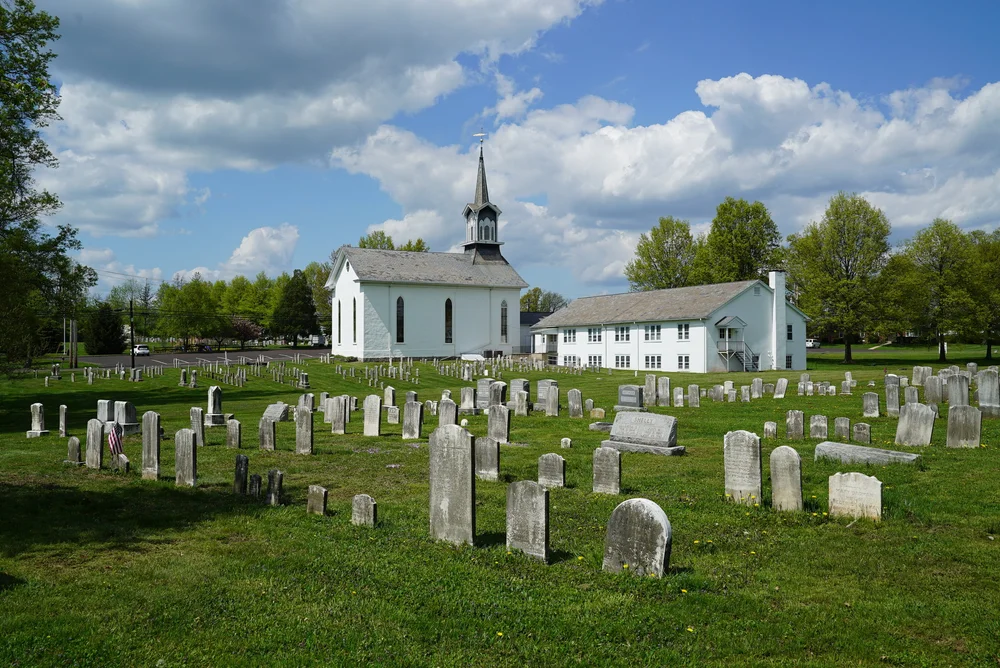What I mean is this? The font was there both as the instrument of the new beginning and its reminder to the baptized of that new birth of their lost lives by water and the Word. But just as the font was the beginning, the cemetery out back signaled the end. The visual clues to this connection were always there but were known and appreciated only sporadically. And that is a shame.
The loss of these ties has come for many reasons. On the one hand, the urbanization and suburbanization of the congregation has left churches without land to connect a cemetery to their building. In rural areas it was extremely common but in our press for space, cemeteries have become expensive land hogs that few congregations find worth the investment. On the other hand, burial is a less popular option today than ever before. Of course, this is due to the cost (average funeral, stone, and burial plot is more expensive than ever) but it is also due to the mobility of families and the lack of a common ancestral home to be the location of burials. In my own parish, few of the children of our families live locally and fewer of those families were local in the first place. Cremation and figuring out what to do with the ashes has become normative for our time. Although Christianity has had its issues with cremation, the cost and attention given to the body cannot be considered good Christian practice either. So it is hard to deny the urge to cremate but even then the cremation cannot be allowed to avoid the need for a proper place of inurnment to prevent the ashes from being carted about. That is not Christian either. Nor is the sentimental favorite of dropping little bits and pieces of a loved one here and there as the cremains are left here and there where the deceased or the family has attachment.
All of this might simply be academic except that the advent of the celebration of life with its attention on the past and the lack of attention given to the proper resting place of the remains have only encouraged this focus on the life lived instead of the life promised in baptism. It shows up more and more in the funeral services (or, as I detest, celebrations of life) but also in the sermons and homilies from clergy. It is not uncommon to hear little or no mention of the resurrection of the body and the life everlasting which are the gift of our Risen Savior. Instead, we are left with a vague notion of a spiritualized existence somewhere out there -- not far from Disney's circle of life idea where the future is some grand reunion with nature and the spirits of all the dead more than the resurrection of the body and the life everlasting IN Christ.
It makes me long for the visual clue of font and cemetery that connects the eye and the mind to what baptism promises and God's fulfillment of the new and everlasting life which is His gift and blessing from the water and the Spirit. Maybe we need to work more on this re-connection -- especially during Lent.

No comments:
Post a Comment